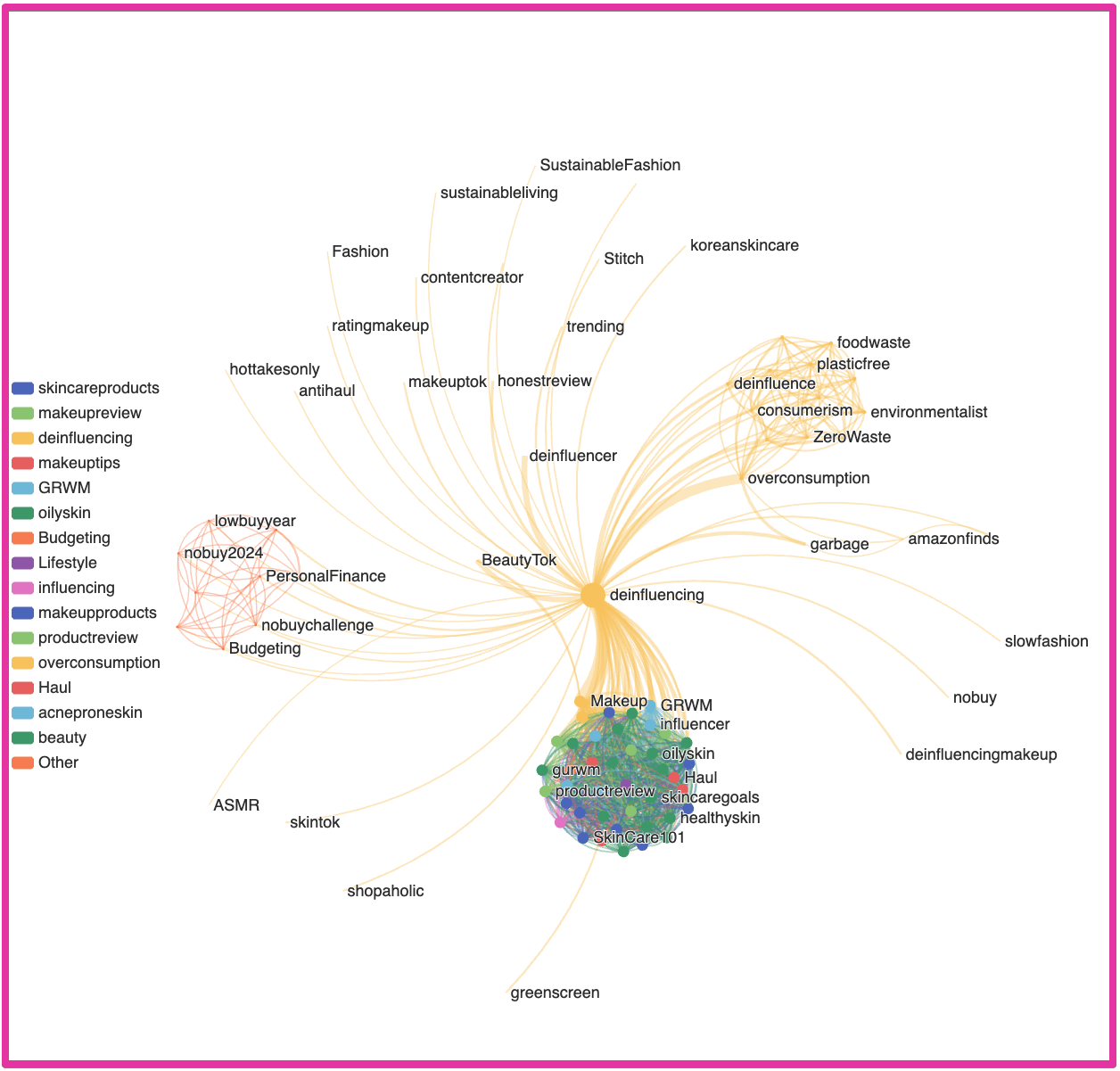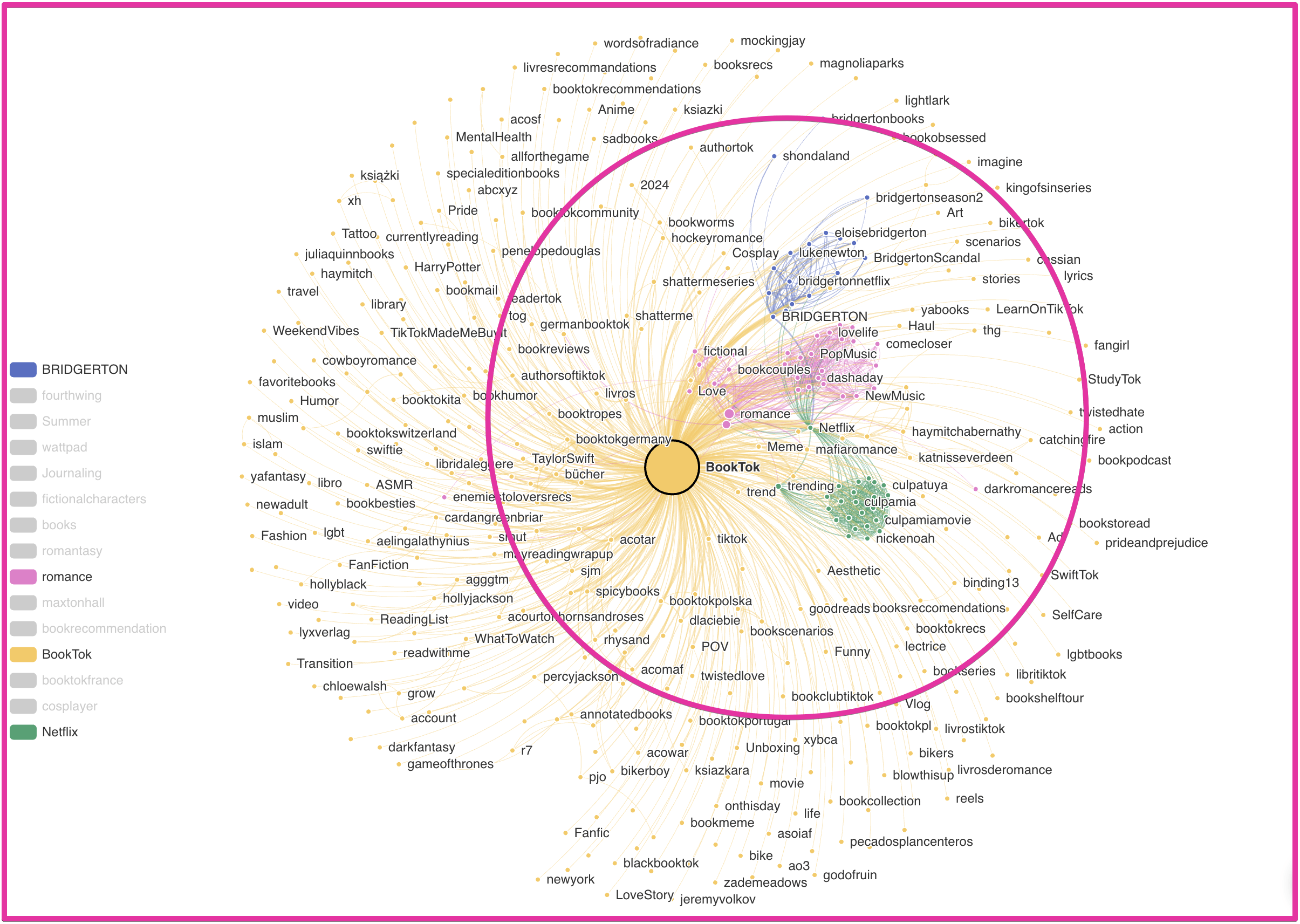Trends don't emerge in isolation; they're influenced by many factors and contexts. So, they often require deeper analysis to be fully understood, as they are crucial in deciphering audience interests, cultural shifts, or preferences.
One of the simplest ways to follow social trends that have entwined entertainment and commerce, influenced lifestyle changes, buying patterns, or posed narrative threats is by unwrapping TikTok hashtags that relate, overlap, or shroud each other with several nuanced sub-themes to form a major context.
The behavioral patterns observed on social media are only often explainable in the right context and with a nuanced understanding of their related sub-themes.
To fuel this thought, our team at Exolyt - TikTok Analytics and Social Intelligence developed a new feature that allows users to explore the complex network of relationships between different topics (read hashtags) discussed on TikTok, providing ample context for navigating its social web.
What is Hashtag Relations?
The hashtag relation network allows users to uncover meaningful relationships between topics discussed on TikTok. For any hashtag of interest, the tool reveals all the hashtags that have been used with that main hashtag for the selected time window.
👉 In the network, every node represents a single hashtag.
👉 Hashtags used together are connected by a link - a thicker link shows hashtags used together more often than others.
When these connections are repeated for each hashtag, a unique relationship network is generated that can change and evolve as TikTok trends rise and user behaviour or interests change.
The links in these graphs are collectively created by the users and represent a mental map of the user base about a particular topic. We use the topology of the links between the topics to break down these graphs into smaller subtopics and isolate different themes.
For example, in the case of the topic #deinfluencing, with reference to the image below, we can see that finance, sustainability, and makeup/skincare are the largest neighbouring subtopics of de-influencing on TikTok. This gives a good understanding of what majorly constitutes this topic before diving deeper, as these smaller sub-topics represent different themes which together build momentum for the main trend.

Source: Exolyt Hashtag Relations
What do the colours mean?
The colours in the network represent communities of hashtags that are more frequently used together than the rest of the hashtags in the graphs.
Think of the hashtags network as a big party, and coloured communities as small groups of friends that break away from the gathering and mingle in smaller groups. In the context of TikTok, these communities can represent more niche topics within the hashtag.
For example, the #BookTok hashtag network contains several smaller communities, each representing different authors, books, genres, or pop-culture references. Since #Bridgerton is used more often with #Netflix than #romance, our community detection algorithm can effectively detect these subtle usage differences and assign each hashtag to a distinct community or colour group.

Source: Exolyt Hashtag Relations
Why is it useful?
Many hashtag analysis tools focus only on the hashtag of interest and its performance metrics.
Here's why the Hashtag Relation Network Graph is a game-changer:
- Beyond Tunnel Vision: Unlike traditional hashtag analysis tools, it offers a broader perspective by illustrating how a topic interacts with related ones.
- Contextual Understanding: Recognizes that trends don't emerge in isolation, providing users with crucial context to comprehend social media conversations fully.
- Enhanced Insights: Offers peripheral vision, enabling users to uncover hidden connections and gain deeper insights into trends and audience interests.
- Comprehensive Scope: Broadens the scope of understanding about conversations and trends on the platform, ensuring users don't miss the bigger picture.
With the Hashtag Relation Network Graph, users can navigate the dynamic landscape of social media with precision and clarity.
How to navigate?
Start with colours - Colours represent communities of hashtags that are frequently used together (representing more niche topics within the hashtag). The colours of the nodes or sub-topics can give you a quick overview of user posting behaviour and existing communities.
- If you're interested in the hashtags' strongest and most common connections, look for wider links and larger nodes (The larger the overlap %, the bigger the nodes and connections).
- If you're interested in the weaker or emerging connections, look at the network's periphery and more isolated nodes.

Source: Exolyt Hashtag Relations


